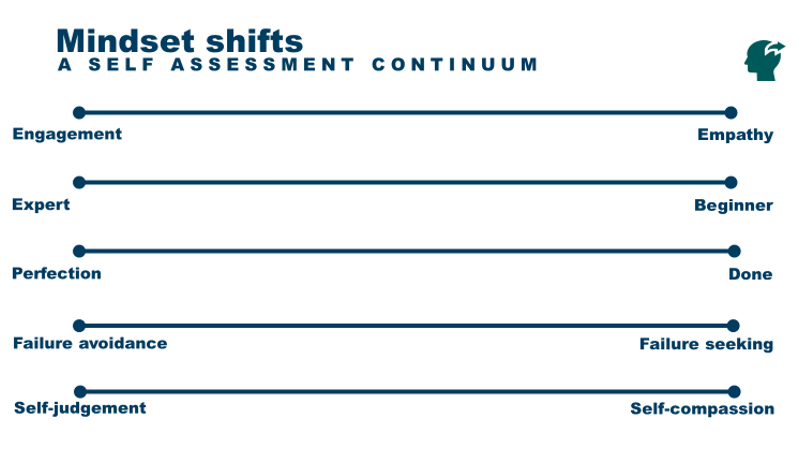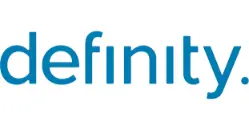
In today’s rapidly evolving business landscape, embracing an agile mindset is no longer optional, it’s essential.
This mindset goes beyond mere methodologies, fundamentally reshaping how we approach work and collaboration.
It’s about being adaptable, open, and proactive in the face of constant change.
At The Agile Change Leadership Institute, we’ve helped over 1,550 students and 132 organisations in 68 countries develop their agile mindset.
Keep reading to see our insights into its definition, principles, and real-world applications in today’s dynamic environment.
At its core, an agile mindset is a set of attitudes and values that recognise failures and challenges as opportunities for learning and improvement, along with the resilience to evolve and adapt to meet changing requirements.
The agile mindset equips you to cope with deep uncertainty, ambiguity, and complexity in fast-moving environments.
It’s about viewing change not as an obstacle but as an opportunity for growth and innovation.
This mindset is implicit in the Agile Manifesto, initially conceptualised for software development but now applied across various industries.
Unlike traditional models that rely on rigid planning and hierarchical decision-making, an agile mindset embraces uncertainty and leverages it for creative problem-solving.
It’s a way of thinking that encourages breaking down large projects into manageable segments, continuously evaluating progress, and adapting as needed.
This approach allows for quicker responses to change, fosters a more collaborative team environment, and ultimately leads to more successful outcomes.
Key elements of an agile mindset include:

These shifts can be expressed as on a continuum are crucial for navigating the complexities of today’s business world and achieving long-term success.
To give you a real-life example of the agile mindset being implemented in a business setting, we’ve created the below scenario.
Business Scenario: A mid-sized financial services firm, “WealthWise Financial,” wants to enhance its client services, and internal operations, and adapt to the fast-paced financial sector.WealthWise Financial might be used to consulting their customers on what is desired in their product range (engagement).
However, engaging with empathy through using personas and data would allow the company to develop a deeper understanding of how and why they use financial services.
With this knowledge, WealthWise Financial would be able to anticipate needs the client is not yet aware of.
The financial planners at WealthWise Financial are used to being sought after for their expertise.
Adopting a beginner mindset however, would lead to growth in professional development.
An example is launching a reverse mentoring program where they learn from interns about areas of the business they’re not as knowledgeable in.
The intern could educate the financial advisor about what digital apps are most popular, and how they could create 15-second TikTok explainers.
The financial planning team are reluctant to incorporate this agile mindset shift as there are legal implications with client Statements of Advice (SoA) being correct.
Incorporating a done-over-perfect mindset, they realise being correct is different to being perfect and implement a better quality check process.
This speeds up the delivery of the SoA’s which generates more customer contract signings.
The actuarialists start a “Learn Out Loud” Friday afternoon session with the entire team.
In this retrospective meeting, they share case studies of failure and poor performance in their industry to identify opportunities for improvement.
Team members are awarded for the biggest impact from using the learnings to turn a case study around to success.
Out of this, WealthWise Financial identifies ways to improve service delivery.
Advisors and analysts find the move to a new digital platform quite challenging.
They have noticed staff being hard on themselves with the time it’s taking them to adapt to the software.
To combat this, the General Manager creates a “Judgment Jar”.
They use this jar whenever they hear a peer criticising themselves for not learning the digital platform faster.
This person must put a gold coin in the jar and say what they would have said to a colleague who was not getting the new platform.
Implementing an agile mindset can be transformative for any organisation, but it also comes with its own set of challenges.
Let’s explore these challenges and propose practical solutions.
Challenge 1: Resistance to Change |
Solution: Cultivate a culture that values adaptability and continuous learning. Recognise that the Agile Mindset is often the antithesis of what your people have been recruited for, rewarded for and promoted for. Offer training to familiarise employees with the agile mindset and its benefits. Highlight successful agile transformations to inspire and motivate the team. |
Challenge 2: Increasing psychological safety |
Solution: Encourage a shift towards more collaborative and cross-functional teams. Empower employees at all levels to contribute ideas and take initiative. Leadership should actively promote and practice flexibility to set a precedent and make it safe to fail.
|
Challenge 3: Maintaining Consistent Agile Practices Across Departments |
Solution: Implement a company-wide agile framework that is adaptable to different departments. Regular cross-departmental meetings can help ensure consistency and share best practices.
|
Challenge 4: Measuring and Demonstrating the Value of Agility |
Solution: Use clear metrics to track the impact of agile practices, such as customer satisfaction scores, time-to-market, employee engagement levels, and productivity measures. When people see that thinking in a new way results in better outcomes, it reinforces the mindset.
|
Challenge 5: Adapting Agile Mindset in a Remote or Hybrid Work Environment |
Solution: Leverage technology to maintain effective communication and collaboration. Establish clear processes and expectations for remote work while preserving the agile principles of flexibility and team autonomy. By understanding and addressing these challenges, organisations can more effectively transition to an agile mindset. Reaping its benefits in terms of enhanced flexibility, increased productivity, and improved customer and employee satisfaction.
|

Embracing an agile mindset is crucial for thriving in today’s dynamic business environment.
It’s about more than just adapting.
It’s about leading the change, staying ahead of trends, and ensuring sustained success.
Understanding and implementing the agile mindset can transform the way your organization operates, leading to increased efficiency, innovation, and customer satisfaction.
Ready to lead the way with agility?
Explore our comprehensive Agile Mindset Training at the Agile Change Leadership Institute.
Our course is designed to equip you with the tools, knowledge, and skills necessary to adopt and excel with an agile mindset in your professional journey.
Join us now and be a part of shaping the future of agile leadership.






























We specialise in contemporary change management and leadership, enabling you and your team to develop the confidence and capability to handle fast-paced change.
Select your desired option below to share a direct link to this page.
Your friends or family will thank you later.